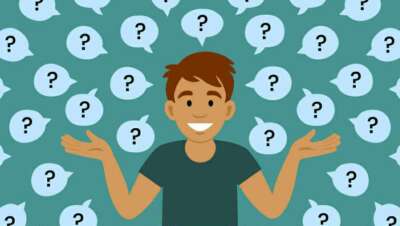
Your first acupuncture appointment might be a little different than what you expected. This is because East Asian Medicine is a whole body method of treatment. Acupuncturists treat diseases according to patterns, not just a diagnosed condition. This generally means that East Asian Medicine practitioners will ask a lot more questions and spend a lot more time with their patients than your typical primary care physician. Let’s dig a little deeper to see why this is necessary.
So you’re probably thinking, I have low back pain. What would my diet or vision or hearing have to do with that? Well, believe it or not, EVERYTHING is connected in the human body. What happens in your low back can be affected by multiple different factors. And conversely, what occurs throughout other areas of your life, can contribute to low back pain. No one symptom that you have is seen in isolation. You are seen as a complete ecosystem, with your own weather system, climate, marshy bits and dry patches. Everything is interlinked.
In East Asian Medicine (EAM), instead of making a “diagnosis” like in Western Medicine, an acupuncturist will ask seemingly unrelated questions, along with taking your pulse and looking at your tongue, to find a pattern. This process is called syndrome differentiation. The pattern diagnosis takes into account your whole body, mind and spirit.
EAM recognizes five elements that are linked to meridian / organ systems, as well as emotions. By asking specific questions, acupuncturists can assess the balance of each element. Here is a breakdown of each element, what meridian system it is linked to and some of the most common symptoms for each element when it is imbalanced.
1. Wood – Linked to the liver and gallbladder meridians and associated with the emotions of anger and frustration. Imbalances can manifest as irritability, headaches, chronic stress, depression, indecisiveness, nausea, anger, frequent sighing, high blood pressure, muscle or tendon problems or vision issues.
2. Fire – Linked to the heart, small intestine, san jiao and pericardium meridians and associated with the emotions of joy and happiness. Imbalances can manifest as stress, heart palpitations, bloating, constipation, emotional outbursts, anxiety, insomnia and circulation issues.
3. Earth – Linked to the spleen and stomach meridians and associated with the emotions of worry and pensiveness. Imbalances can manifest as nausea, vomiting, diarrhea, acid reflux, edema, fatigue, bloating, overthinking, cold intolerance, dry mouth and a pale complexion.
4. Metal – Linked to the lungs and large intestine and associated with the emotions of grief and sadness. Imbalances can manifest as depression, fatigue, shortness of breath, coughing, constipation, bloating, skin problems and getting sick frequently.
5. Water – Linked to the kidneys and the urinary bladder and associated with the emotion of fear. Imbalances can manifest as joint pain, hormone imbalances, chronic fatigue, fertility issues, frequent urination, incontinence, low back pain, hearing loss, dizziness, tinnitus and poor memory.
In all of these syndrome differentiations there is an assessment of the relationship of qi, blood, yin (cold), yang (warmth), excess and deficiency, and what treatments would be best to bring balance into the mix. Here are some examples of how the questions we ask help us determine a holistic diagnosis and treatment plan.
Patient #1 – Presents with a red complexion, headaches and migraines, frequent irritability, insomnia, high blood pressure induced by stress, excessive thirst and a feeling of overall heat. We might ask about their sleep patterns, when the headaches appear, where the headaches are being felt and their dietary patterns / water intake. Based on the patient’s presentation, we would call this syndrome or pattern Liver Fire. All of the above symptoms exhibited by the patient are related to the liver and because there is excess heat, we call that fire.
Patient #2 – Presents with an acute low back sprain with sharp and shooting pain. We might ask about their work environment, their sleep habits, if there is any history of urinary tract infections or stones or if there has been any injury to the low back before. We know that the urinary bladder channel runs down the length of the back and this is the most likely involved meridian. If there is sharp pain present, it is due to a stagnation of energy and / or blood flow. Because there is stagnation, or buildup, that means there is excess in that area. So the syndrome or pattern would simply be qi and blood stagnation in the urinary bladder channel.
The treatment of patterns in EAM also varies greatly. This is because there are over 400 acupuncture points on the body and each point has its own set of properties, making them interchangeable and giving the acupuncturist a lot of options. For example, there is an acupoint between the first and second toe that helps with any vision issue, as well as anger or headaches. With so many acupoints to choose from, the point combinations are limitless and may be different for every patient, even if they have the exact same EAM diagnosis.
EAM practitioners / acupuncturists don’t just treat the symptoms, they focus on whole body balancing. And this is done because every part of the body can potentially affect another part or area. So don’t be surprised if you are asked a bunch of questions that don’t specifically relate to why you are seeking help. Every question gives more insight into what may actually be contributing to the overall issue. And in order to give treatments that are successful and helpful, the practitioner needs all the information. So don’t hold back. Trust me, we’ve heard it all and there is no judgement being made.

